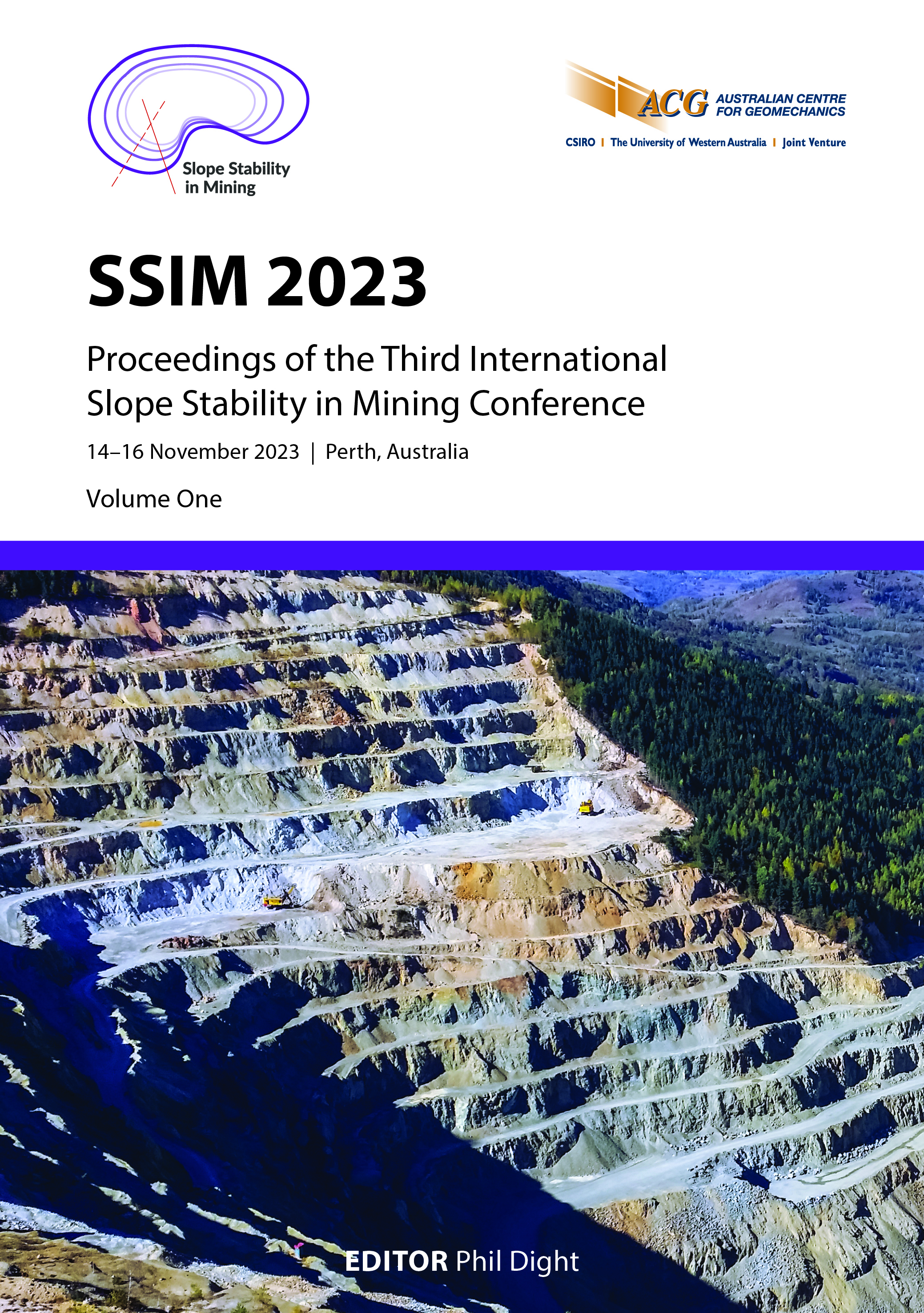Integrated hydrogeological and geotechnical studies at the Diavik Diamond Mine in support of pit slope design optimisation

|
Authors: Levenick, J; Chorley, D; Dourado, C; Jain, K; Valerio, M; Ross, S; Chivasa, M |
DOI https://doi.org/10.36487/ACG_repo/2335_02
Cite As:
Levenick, J, Chorley, D, Dourado, C, Jain, K, Valerio, M, Ross, S & Chivasa, M 2023, 'Integrated hydrogeological and geotechnical studies at the Diavik Diamond Mine in support of pit slope design optimisation', in PM Dight (ed.), SSIM 2023: Third International Slope Stability in Mining Conference, Australian Centre for Geomechanics, Perth, pp. 81-96, https://doi.org/10.36487/ACG_repo/2335_02
Abstract:
Integrated hydrogeological and geotechnical studies have been critical for slope stability analysis and pit slope design at the Diavik Diamond Mine A21 pit in the Northwest Territories of Canada, an area of continuous permafrost. The mine is located on the shores of Lac de Gras and required partial dewatering of a lake with the associated construction of a water-retention dyke to facilitate the pit excavation within the underlying open talik (unfrozen ground). Pre-feasibility hydrogeological modelling of the pit identified the need for a dewatering well network to achieve the design acceptance criteria for the pit walls. Testing of initial dewatering wells installed along the pit crest identified the potential presence of an unmapped structural feature/enhanced permeability zone behind the southeast wall of the pit. This triggered further detailed review of core logs and available mapping data, which corroborated the presence of a highly fractured zone for consideration in both the hydrogeological and slope stability modelling in support of detailed pit slope design and optimisation. Over the course of the mine life, multiple revisions of the hydrogeological model have been made as supplemental data has been collected to support refinement of pore pressure predictions behind the pit walls. The groundwater modelling considered the inherent uncertainty of modelling in bedrock environments and the efficiency of pumping wells in fractured bedrock, and was completed in close collaboration with geotechnical teams to successfully support slope stability analysis and design optimisation.
Keywords: dewatering, groundwater model, slope stability, well efficiency
References:
Bierschenk, WH 1964, Determining Well Efficiency by Multiple Step-Drawdown Tests, International Association of Scientific Hydrology, Berkeley.
Cooper, HH & Jacob CE 1946, ‘A generalized graphical method for evaluation formation constants and summarizing well field history’, American Geophysical Union Transaction, vol. 27, no. 4, pp. 526–534.
Driscoll, FG 1986, Groundwater and Wells Second Edition, US Filter/Johnston Screens, St Paul.
Jacob, CE 1946, ‘Drawdown test to determine effective radius of artesian well’, American Society of Civil Engineers Transaction, vol. 112, pp. 1047–1070.
Theis, CV 1935, ‘The relation between the lowering of the piezometric surface and the rate and duration of discharge of a well using groundwater storage’, American Geophysical Union Transaction, vol. 16, pp. 519–524.
© Copyright 2025, Australian Centre for Geomechanics (ACG), The University of Western Australia. All rights reserved.
View copyright/legal information
Please direct any queries or error reports to repository-acg@uwa.edu.au
View copyright/legal information
Please direct any queries or error reports to repository-acg@uwa.edu.au

